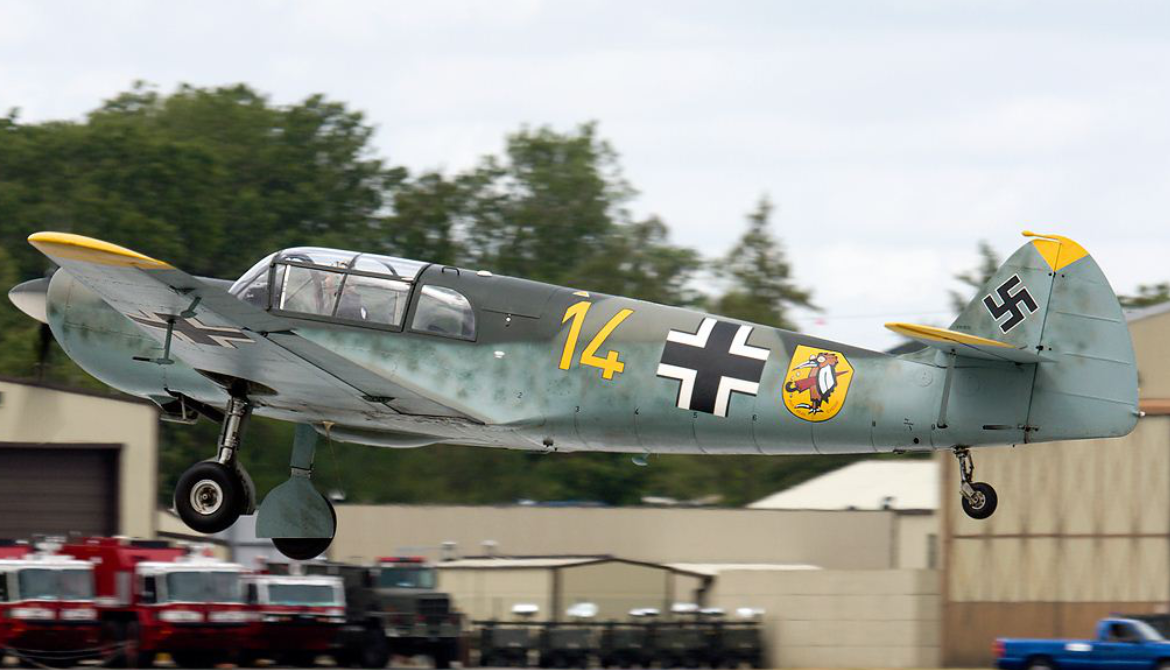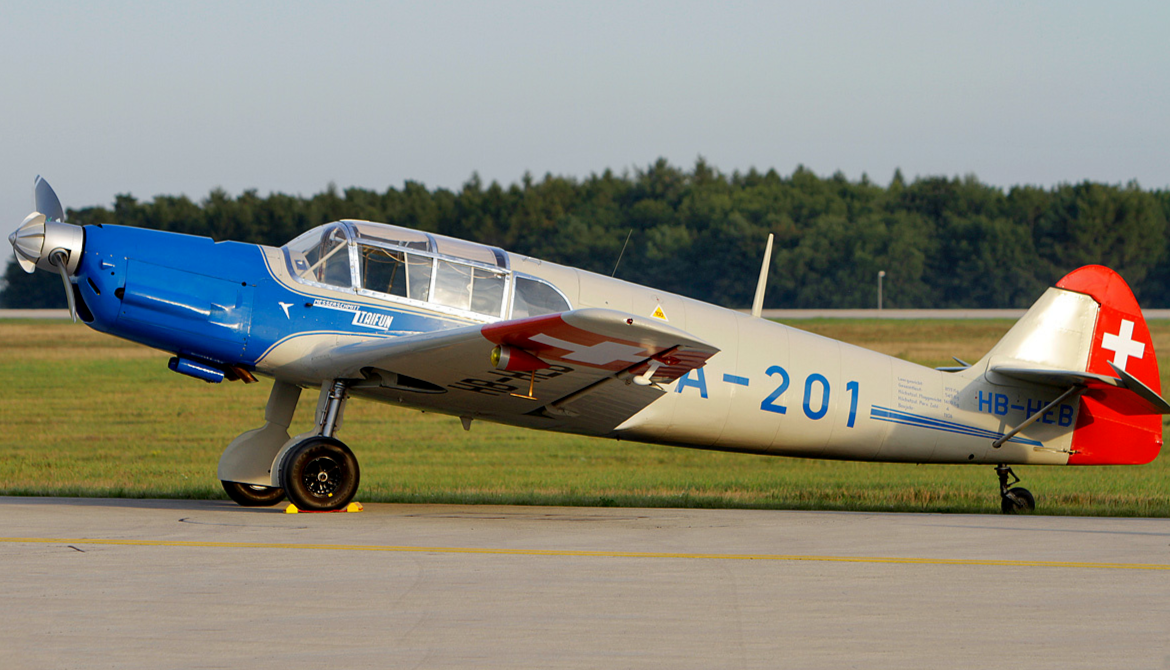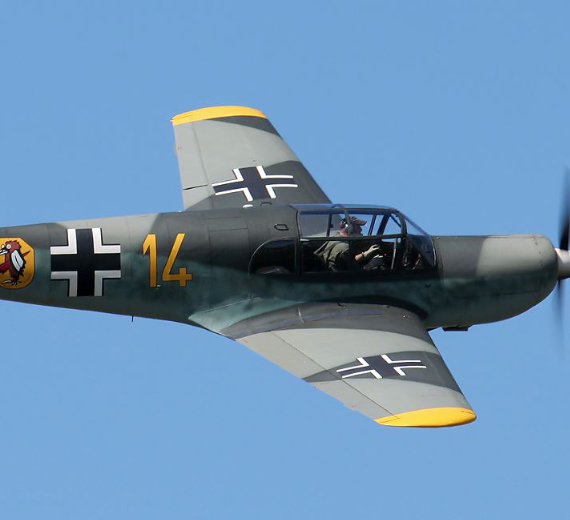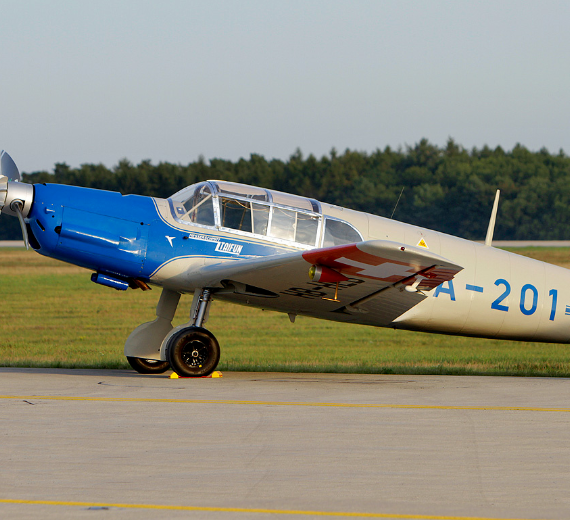de Havilland Vampire DH.100 F.1
 |
|
| Preserved de Havilland DH.115 Vampire trainer in Royal New Zealand Air Force markings | |
| Role | Fighter aircraft |
|---|---|
| National origin | United Kingdom |
| Manufacturer | de Havilland English Electric |
| First flight | 20 September 1943 |
| Introduction | 1946 |
| Retired | 1979 (Rhodesian Air Force) |
| Primary users | Royal Air Force Royal Australian Air Force Fleet Air Arm (RAN) Royal Navy Royal Canadian Air Force |
| Number built | 3,268 |
| Developed into | de Havilland Venom |
.
History de Havilland Aircraft Company Limited
de Havilland Vampire "named Spider Crab"

The de Havilland Vampire is a British jet fighter which was developed and manufactured by the de Havilland Aircraft Company. It was the second jet fighter to be operated by the RAF, after the Gloster Meteor, and the first to be powered by a single jet engine.
In January 1941, Sir Henry Tizard made an informal approach to the de Havilland Aircraft Company, suggesting that the company proceed to design a fighter aircraft that would use the revolutionary new jet propulsion technology then under development, along with an appropriate engine to go with it. Although no official specification had been issued, de Havilland proceeded to design a single-engined aircraft that had air-intakes set into the wing roots to feed a centrally mounted engine, which used a centrifugal compressor..
.
Design

The de Havilland Vampire was a jet-powered twin-boom aircraft, typically employed in the fighter and fighter bomber roles. Aviation author Francis K Mason referred to it as being "the last unsophisticated single-engine front line aircraft to serve with Britain's Fighter Command"; the Vampire was a relatively straightforward aircraft, employing only manually operated flight controls, no radar, a simple airframe, and, aside from the propulsion system, made use of mostly conventional practices and technologies. The distinctive twin-boom tail configuration of the Vampire was one of the only non-traditional airframe features when compared to its contemporaries.
In comparison to later aircraft, the Vampire had a relatively disorganised cockpit that in some aspects lacked ergonomic measures; such as the fuel gauges being difficult for the pilot to observe without pulling the control column back. A few controls, such as the low-pressure fuel cock, were known for being difficult to move or were otherwise obstructed by other controls. The pilot was provided with a fairly favourable external view, in part aided by the relatively small size of the Vampire.
Engine

The Vampire was first powered by a single Halford H1 (produced as the de Havilland Goblin) turbojet engine,
0
KmCeiling
0
KmCombat RANGE
0
Km/hAircraft Speed
0
Max Crew
Photo Gallery
de Havilland Aircraft Company Limited
de Havilland Vampire FB.6 "the Spider crab"


de Havilland Aircraft Company Limited
de Havilland Vampire FB.6
General Info
-
-
-
- Crew: 1
- Length: 30 ft 9 in (9.37 m)
- Wingspan: 38 ft 0 in (11.58 m)
- Height: 8 ft 10 in (2.69 m)
- Wing area: 262 sq ft (24.3 m2)
-
-
Powerplant
-
-
- Empty weight: 7,283 lb (3,304 kg)
- Max takeoff weight: (5,620 kg)
- Powerplant: 1 × de Havilland Goblin 3 centrifugal-flow turbojet engine, 3,350 lbf (14.9 kN) thrust
-
Performance
-
- Maximum speed: (882 km/h
- Range: 1,220 mi (1,960 km,
- Service ceiling: (13,000 m)
- Rate of climb: 4,800 ft/min
Armament
-
-
- Guns: 4 × 20 mm (0.79 in) Hispano Mk.V cannon with 600 rounds total (150 rounds per gun).
- Rockets: 8 × 3-inch "60 lb" rockets
- Bombs: 2 × 500 lb (225 kg) bombs or two drop-tanks
-
.
Links to Youtube & Others
Although in operational use, the Vulcan typically carried various nuclear armaments, the type also had a secondary conventional role. While performing conventional combat missions, the Vulcan could carry up to 21 1,000 lb (454 kg) bombs inside its bomb bay.
Avro Int.
Avro B.2 Vulcan
The Vulcan's only combat missions took place towards the end of the type's service in 1982. During the Falklands War.
Youtube Link
The missions performed by the Vulcan became known as the Black Buck raids, each aircraft had to fly 3,889 mi (6,259 km) from Ascension Island to reach Stanley on the Falklands. Victor tankers conducted the necessary air-to-air refuelling.





-depositphotos-bgremover.png)





